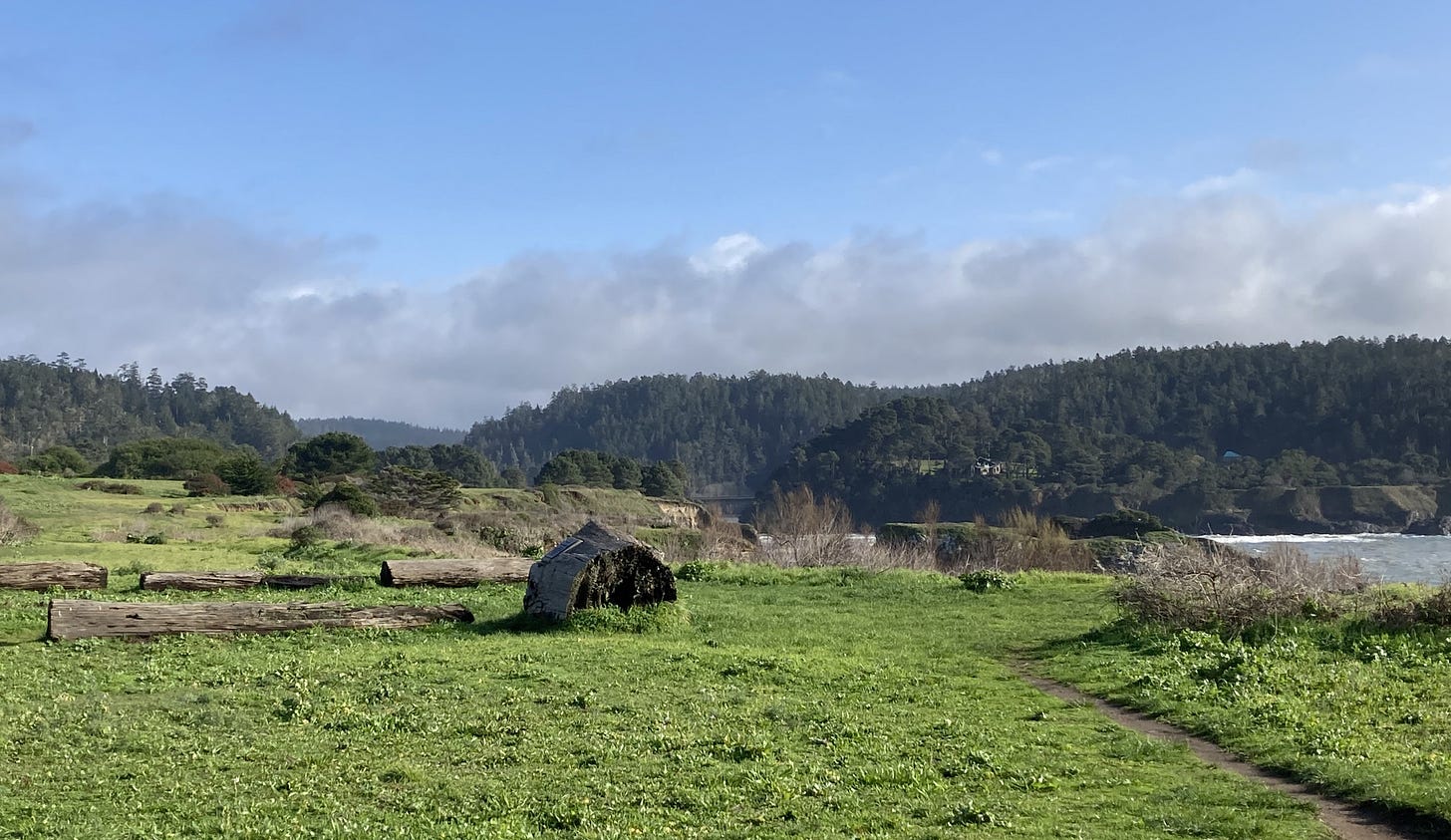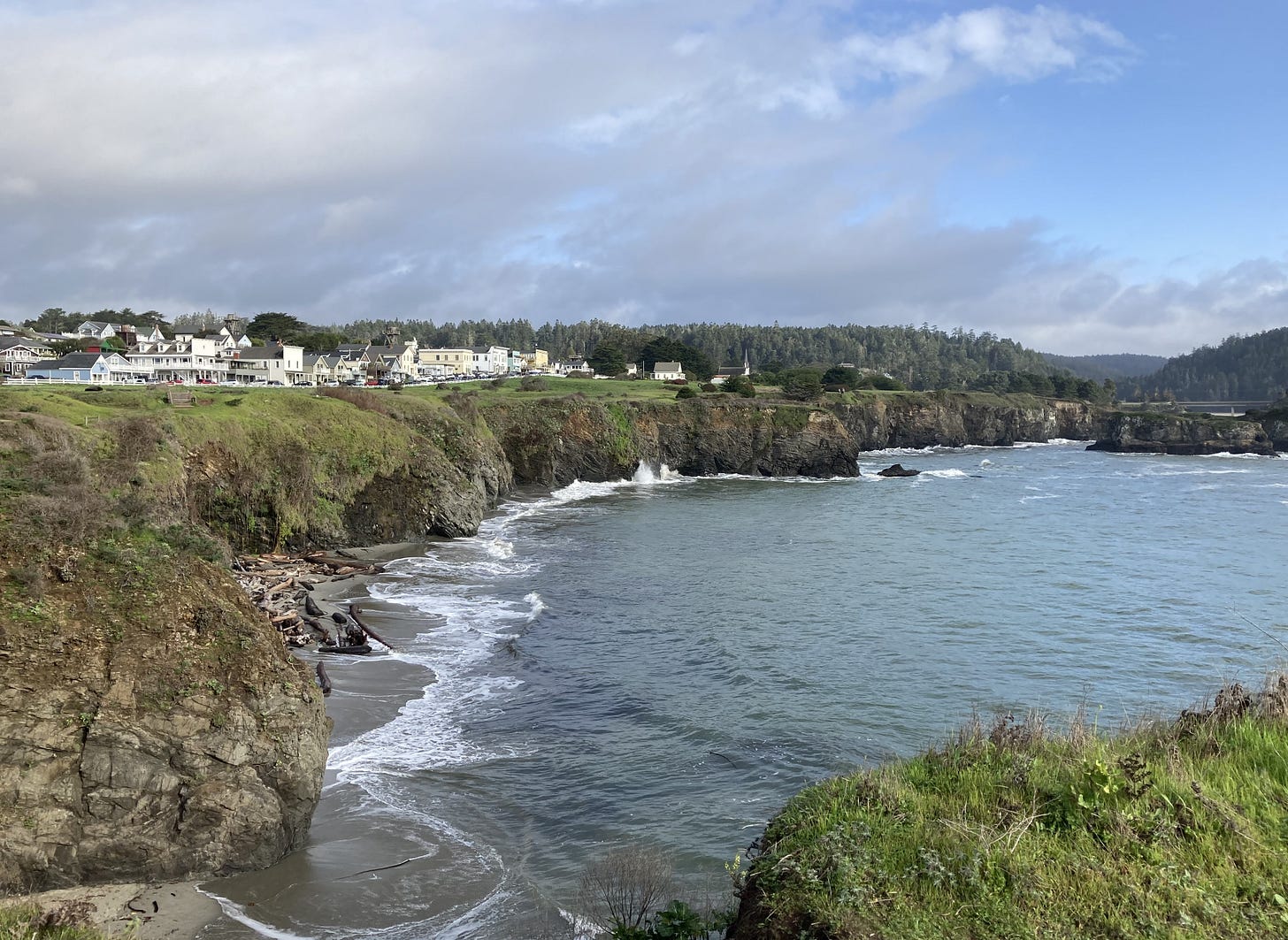I walked along the Mendocino Headlands State Park. It is winter here. It is the afternoon of Christmas Eve. Storms are passing through.
I turned toward the vast ocean. The wind was whipping and the waves below were crashing against the rocks. I was dressed warmly and the sun was out shining through the fast moving clouds carrying rain east over the Coast Mountain Range.


I turn my gaze toward Main Street of this small village. I wondered how this village became what it is now—a mecca for tourists. Houses and apartments, once housing friends, families and children now are mostly turned into shops, restaurants and tourist lodging or are un-affordable properties for most locals. I even lived for a short time one winter in the village, house sitting for friends.
Lost in my thoughts, I walked up to the Temple of Kwan Tai —a Chinese Taoist temple, a house of worship and originally built by the once large population of Chinese immigrants who worked in various jobs supporting the lumber industry on the Mendocino Coast. They dedicated the Temple of Kwan Tai to the deified Han Dynasty general known in Cantonese as Kwan Tai.
Thankfully this special place, one of the oldest Chinese temples in California, has been lovingly preserved and is a California Historical Landmark.
Katy Yam founder and editor of Hong Kong Travel Blog writes, “Kwan Yu or Guan Yu, was a famous and powerful general of the state of Shu Han in the Three Kingdoms (AD 184/220–280) period of China. He was also the sworn brother of Liu Bei, the first ruler of Shu Han. There were many successful generals in the past dynasties, Kwan Yu, in contrast, was defeated and killed in war. So why is praised highly in Chinese culture? It is because of his loyalty, courage and righteousness. In Chinese folk religion, he is widely referred to as Kwan Tai/ Guandi (關帝, Emperor Kwan) or Kwan Kung/Guan Gong (關公, Duke Kwan). He has been deified by Chinese folks as the Martial God since his death. He is also worshiped in popular Confucianism, Taoism, and Chinese Buddhism.”-
A narration by Ron Lam takes one on an amazing journey to learn about the Chinese migration to California and the creation of the Kwan Tai Temple in Mendocino California.
For as long as there have been civilized humans, there has been some form of China.(https://www.history.com/topics/china/china-timeline).
I am so amazed how much of immigrant labor has built this country. Chinese, Italian, Portuguese, Poles, Irish, etc. Then there are the stain of slave ships from the African continent and the slavery and massacre of the indigenous tribal peoples. All we seem to historically celebrate are those few who actually gained wealth from the labor of others. Unfortunately with history’s march of time it is hard to know how those who labored felt about their circumstances or what they dreamed of?
Everywhere on this planet human beings like you and I are just trying to survive amidst the churn of politics and under challenging circumstances be it authoritarian governments or under the thumb of corporations. The definition of freedom is thrown around. Who is free when the chains of poverty are everywhere? Is anyone really free?
Looking around this village of Mendocino, looking off to the forested mountains beyond. How long will the surrounding nature be free to be?
Half of the world's net wealth belongs to the top 1%, top 10% of adults hold 85%, while the bottom 90% hold the remaining 15% of the world's total wealth, top 30% of adults hold 97% of the total wealth. The human costs are devastating, with minorities and especially women and girls and suffering the most. Homelessness abounds.
I hope this Kwan Tai Temple in Mendocino stands the test of time and opens the door to the rich history of nameless everyday people everywhere whose work built and continues to build fortunes for others.


